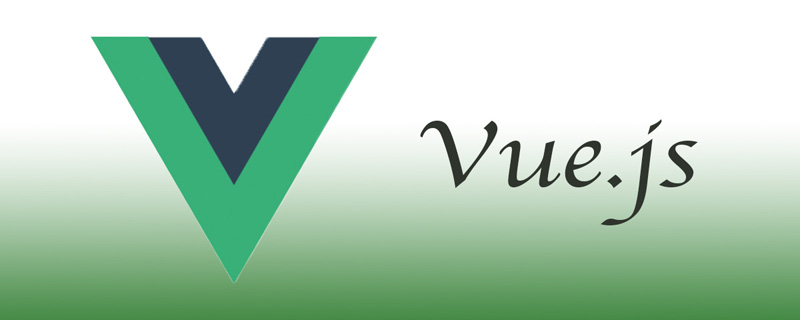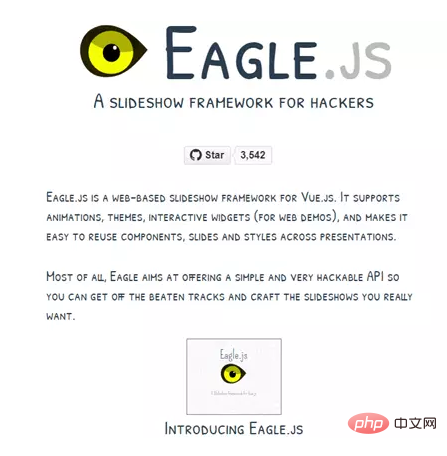Home >Web Front-end >Vue.js >10+ Top Vue.js Tools and Libraries (Share)

Vue continues to be popular and quickly adopted by many developers, and Vue.js tools are widely available. That's not without reason: Vue's shallow learning curve, clear feature-driven structure, and excellent documentation make it easy for newbies to get started, while experienced developers can switch from other frameworks like React or Angular.
If you take Vue development seriously, sooner or later you will come across some essential tools and libraries that stand out. Using them can advance your career as a Vue developer and make you feel like an expert.
I have compiled a list of the most famous tools and libraries that you should know about and eventually use in your Vue.js projects. Unlike many other articles out there that only list UI component libraries, this compilation explores the broad mix of tools, libraries, and plugins in the Vue ecosystem.
I selected them based on their usefulness, effectiveness, and uniqueness, not based on their GitHub popularity or stars.
It seems like having some kind of CLI tool is a must for every JavaScript application framework these days. Vue is no exception. Vue CLI is a full-featured toolset for rapid Vue development. In addition to the usual project scaffolding, it also allows you to try out new ideas without even creating a complete project by using its instant prototyping capabilities.
By default, Vue CLI provides support for major web development tools and technologies, such as Babel, TypeScript, ESLint, PostCSS, PWA, Jest, Mocha, Cypress, and Nightwatch. This is thanks to its extensible plugin system. This means the community can build and share reusable plugins for common needs.
But the icing on the cake is the powerful GUI (Vue UI, shipped with the CLI), which allows you to easily create projects and then configure and manage them without the need for popups.
Click here to view:Vue CLI
In the Vue ecosystem The next major player is VuePress, a static site generator powered by Vue. Originally created as a tool for writing technical documentation, it is now a small, compact and powerful headless CMS. Starting from version 1.x, it provides excellent blogging functions and a powerful plug-in system. It comes with a default theme (according to the technical documentation), but you can also build a custom theme or use pre-made options from the community.
In VuePress, you can write content in Markdown and then convert it into a pre-rendered static HTML file. Once these files are loaded, your site will run as a single-page application powered by Vue, Vue Router, and Webpack.
One of the main advantages of VuePress is that you can include Vue code or components in Markdown files. This gives you great power and flexibility, as you can develop your website almost like a regular Vue app and get all the benefits from it.
Click here to view: VuePress
State management is one of the major issues developers encounter when building web applications. To solve this problem, Vue provides a state management system Vuex. It acts as a centralized store for all components in the application, where state can only change in a predictable way. The store is a special object divided into four parts:
state – an object that stores application data
getters – contains the Object that abstracts methods for accessing state
mutations – Object that contains methods that directly affect state
actions – contains methods for triggering mutations and execution The object
##store of a method of asynchronous code can also be divided into multiple modules for better maintainability.
Click here to view:Vuex
Using server-side rendering (SSR), Nuxt is usually used. This is a simple and straightforward framework for building universal applications. It is also modular, so you can only use those modules that your application requires.
Using Nuxt, you can create server-rendered applications (SSR), single-page applications (SPA), progressive web applications (PWA), or just use it as a static site generator.
In short, Nuxt frees you from the tedious work of structuring and optimizing your applications, giving you a streamlined and more enjoyable development experience.
Click here to view: Nuxt
Vuetify is one of the best UI component libraries currently. It provides a large number of well-designed components (more than 80) based on the Material Design specification to meet the needs of almost any application.
You can use it to build SSR applications, SPA, PWA and mobile applications. You can launch a new app or add it to an existing app. It offers free and premium themes, but you can also build your own. It also provides a system for selecting and selecting only the components that are being used, significantly reducing the final size of the application.
All components of Vuetify are well documented, with clear examples provided.
Click here to view: Vuetify
Quasar is the JavaScript version of the "write once, run anywhere" Java philosophy. It is a universal, Vue-enabled framework that allows you to write applications for different platforms using the same code base. spas, pwas, ssr apps, hybrid mobile apps or multi-platform desktop apps, you name it!
It has good documentation and a large number of components, designed with performance and responsiveness in mind. Quasar integrates best practices (html/css/js minification, cache busting, tree shaking, source mapping, code splitting for lazy loading, es6 transports, code linting, accessibility) by default so you can focus primarily on your application Program functionality. It also provides a cli tool for easy building of new projects.
Click here to view: Quasar
Vue is primarily a component-based framework, so well-written, efficient components are crucial for every application developer. Storybook may come in handy during this process. It allows you to develop, manage and test UI components in an easy-to-use and isolated environment. The tool allows developers to create components independently of the main application and present them interactively in an isolated development environment without having to worry about application-specific dependencies and requirements.
Storybook provides many add-ons, as well as a flexible API, to customize Storybook according to your needs. It is also possible to export a static web application and deploy the project to any HTTP server.
Click here to view: Storybook
Vue Apollo. This library makes working with Vue and GraphQL/Apollo smoother and more enjoyable.
Click here to view:
Vue DevTools is a great browser extension for debugging Vue and Vuex applications.
Vue Test Utils is a collection of useful utilities for testing Vue components.
Vue Router is the official route of Vue.
Vue Native is a JavaScript framework for mobile applications, similar to React Native.
Weex is a framework for building mobile applications using modern web technologies, including Vue.
Original address: https://www.zeolearn.com/interview-questions/vue-js
Related recommendations:For more programming-related knowledge, please visit:
2020 Summary of front-end vue interview questions (with answers)
vue tutorial recommendation: the latest 5 vue.js video tutorials in 2020 Selected
Introduction to Programming! !
The above is the detailed content of 10+ Top Vue.js Tools and Libraries (Share). For more information, please follow other related articles on the PHP Chinese website!